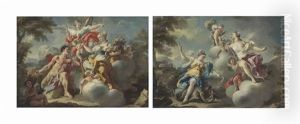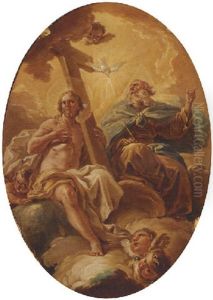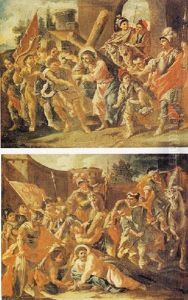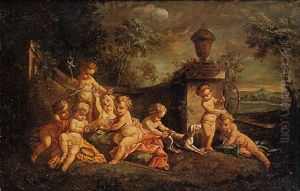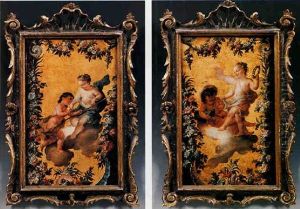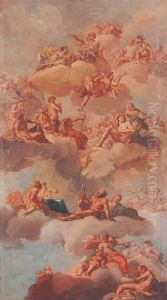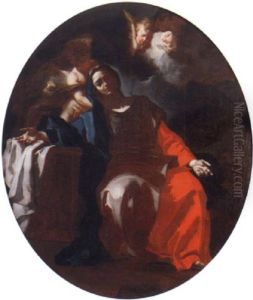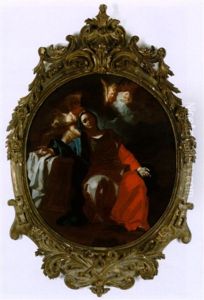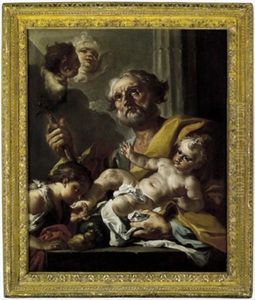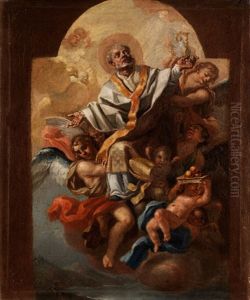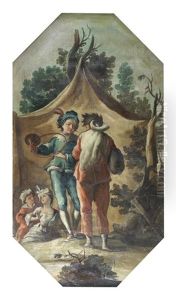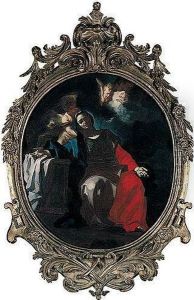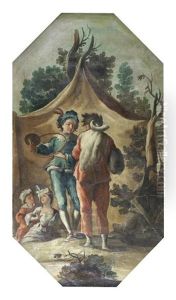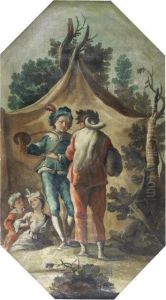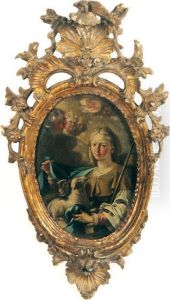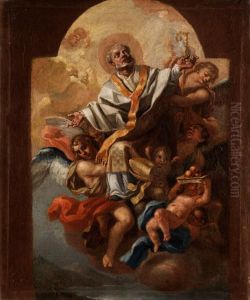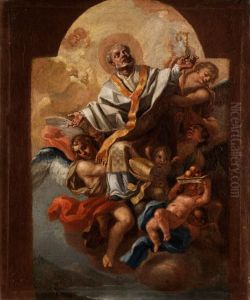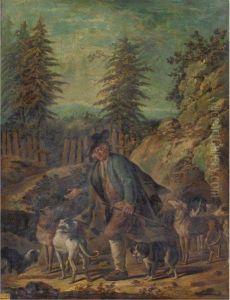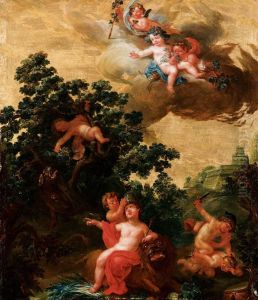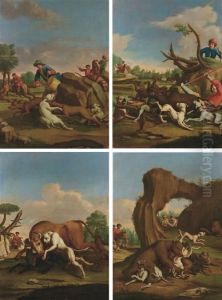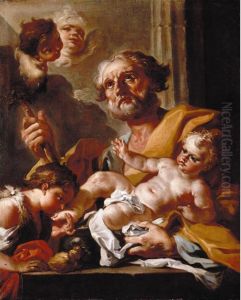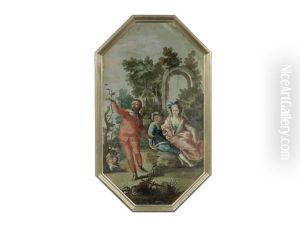Francesco Celebrano Paintings
Francesco Celebrano was an Italian artist, primarily known for his work as a sculptor and stuccoist, active during the 18th century in Naples, Italy. Born in 1729, Celebrano was part of the Rococo movement that was prevalent in Europe at the time, and his work is characterized by the ornate and highly decorative style that defines this period.
Celebrano's formative years as an artist were influenced by the rich artistic atmosphere of Naples, which was a bustling center for the arts during the 18th century. He was likely exposed to the works of prominent local artists and sculptors, which would have shaped his artistic sensibilities and technical skills. Although not as widely known as some of his contemporaries, Celebrano contributed significantly to the artistic landscape of Naples with his intricate stucco work and sculptural pieces.
Throughout his career, Francesco Celebrano worked on various churches and buildings in Naples, leaving behind a legacy of decorative sculptures and stucco that reflected both the religious fervor and the artistic elegance of the time. His creations often featured flowing lines, delicate figures, and an emphasis on lightness and grace, which were hallmarks of the Rococo aesthetic.
One of his notable works is the stucco decoration of the church of Santa Maria di Piedigrotta, where his contribution to the interior decoration is a testament to his skill and artistic vision. Celebrano's works were part of a broader movement in Naples that saw the construction and embellishment of numerous religious edifices, a testament to the city's importance as a cultural and spiritual center during the 18th century.
Francesco Celebrano passed away in 1814, leaving behind a body of work that, while not as widely recognized as that of some of his peers, represents an important part of the Rococo movement in Italy. His legacy is preserved in the stucco and sculptures that adorn the churches and buildings of Naples, serving as enduring examples of the city's rich artistic heritage from that era.
